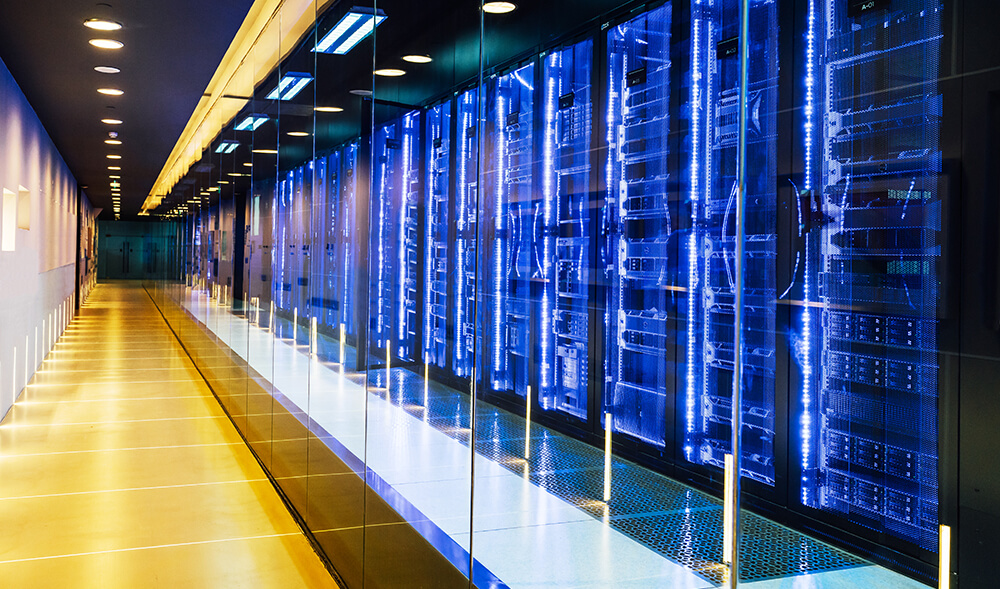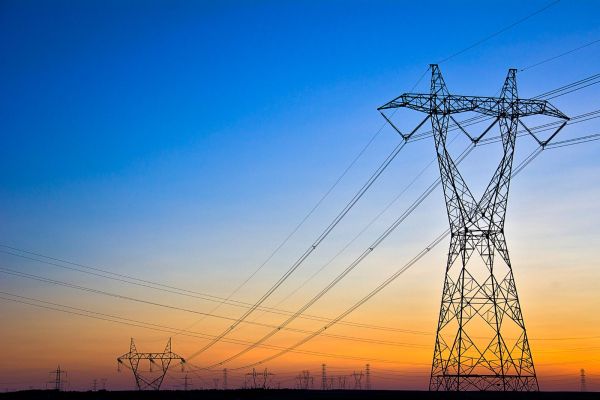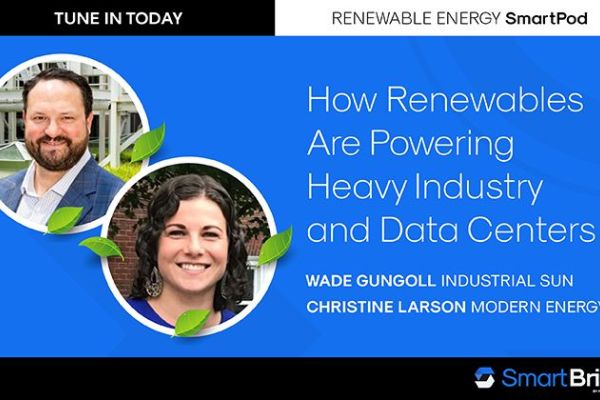Why data centers are ‘swiping right’ for Texas solar
Insights
Mar 15, 2024
Written by Alexandra Williams

In today’s era of Big Data and near-constant Internet connectivity, we collectively generate a lot of data. By some recent estimates, global society creates, processes, and otherwise churns through 3.5 quintillion bytes of data each day. (A quintillion = a one followed by eighteen zeroes.) That number continues to soar annually, with the size of the digital data universe doubling roughly every two years.
It’s no surprise, then, that the data center market is also growing rapidly, with new facilities constantly coming online across Texas. In fact, North Texas now ranks ahead of Silicon Valley as one of North America’s top data center hubs.
Increasingly, those data centers are on the hunt for affordable, reliable, and clean electricity to power their operations.
Hungry For Electricity
As the world’s appetite for data skyrockets, data centers’ hunger for electricity to power their expanding operations grows, too.
Data centers are among the most energy-intensive building types, consuming 10–50 times more energy per square foot than a typical office building. Almost all of that energy is electricity, with data centers accounting for 1–1.5% of global electricity consumption and ~1% of energy-related emissions, according to the IEA. Some estimates put that number even higher, suggesting data centers consume 3% of global electricity today, growing to 4% by 2030.
A fast-growing list of game-changing factors continues to push those numbers higher: streaming services, online gaming, cloud computing, cryptocurrency, machine learning, generative AI, and the list goes on.
McKinsey & Company forecasts that data center electricity demand in the United States alone could grow from 17 GW in 2022 to 35 GW by 2030.
The industry has undoubtedly made strides through effort such as greener software, energy-efficiency improvements to server hardware, and instituting cooling best practices. But on the supply side, renewable energy has stepped out as an equally important part of the solution.
Green electrons to manage costs and climate impact
The information and communications technology (ICT) sector is no stranger to renewable energy. In fact, tech companies account for more than half of corporate contracted renewable capacity to date, according to updated market analysis by S&P Global Commodity Insights earlier this year. Power purchase agreements (PPAs) of various flavors are especially popular.
Google, Microsoft, Amazon, Meta, and others have led the charge for green electrons. It’s no surprise, really. Renewable energy PPAs help tech companies — and their data centers’ thirst for electricity — buffer themselves from power price volatility, reduce overall energy costs, and decarbonize their operations toward renewable energy procurement targets and/or emissions-reduction or net-zero goals.
Now, some companies are going further, thanks in part to trends such as 24/7 carbon-free energy. They’re looking to procure from renewable energy projects whose generation better matches their data center load curves and/or which deliver greater avoided emissions benefits on the road to net-zero. On these fronts, Texas solar stands out from the crowd.
Power couple: Data center demand and solar’s generation curve
Historically, data center demand was considered relatively flat. That’s because they often operated at a high 90% load factor. But times have changed. A variety of factors have made data center demand more dynamic — and into closer alignment with solar’s generation curve.
For one, many data centers’ byte crunching and electricity demand — in Texas and around the world — now follows a diurnal ebb and flow. This often mirrors the rhythm of everyday life. On weekdays, data centers ramp up through the middle of the work day, then subside overnight as data needs taper off. (On Fridays and Saturdays, demand still climbs during the day, but doesn’t peak until later in the evening, presumably when everyone is home streaming their favorite shows on Netflix and Amazon Prime.) With these recent trends, data center peak electricity demand can be fully 2x the off-peak demand.
For another, with desires for low latency as well as putting data centers’ heat to beneficial use, we’re seeing a rise in mixed use data centers closer to urban hubs. These mixed use facilities essentially co-locate classic data center server farms with traditional office building functions. These mixed use data centers have even stronger alignment with solar PV production profiles, peaking midday into the afternoon hours.
Finally, savvy tech companies are also increasingly leaning into “carbon-aware computing,” in which they shift the timing of flexible computation loads to align with low-carbon renewable energy such as solar generation.
Five ways Texas data centers pair well with industrial solar
In Texas especially, this alignment between data center demand and solar energy generation unlocks at least five key benefits, especially when it comes to net-metered industrial solar:
-
Thanks to a strong solar resource and PPA innovation, solar offers lower-cost electricity on a per-MWh basis and hedges against price volatility during peak months.
-
Solar drastically reduces ERCOT 4CP demand charges, with high generation through the same hours that typically set 4CP pricing.
-
Since data center load curves and solar generation profiles often align, industrial solar helps data center operators meet 24/7 carbon-free energy goals.
-
More broadly, as a reliable source of clean energy, solar helps data centers decarbonize Scope 2 emissions with simple, behind-the-meter accounting.
-
Through proximate siting, solar overcomes space constraint limitations of traditional on-site solar, such as rooftop solar PV generation that would fall far short of data center electricity needs.
Contact our team to learn more about how net-metered industrial solar can help your data centers’ energy costs and emissions footprint.




